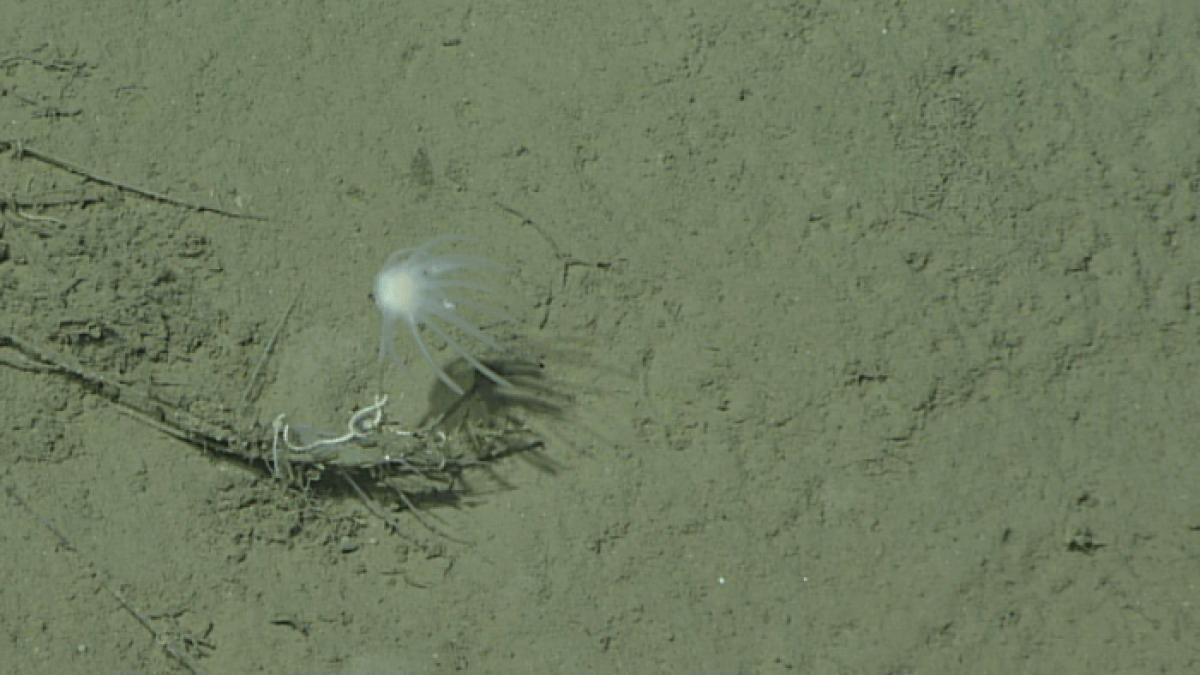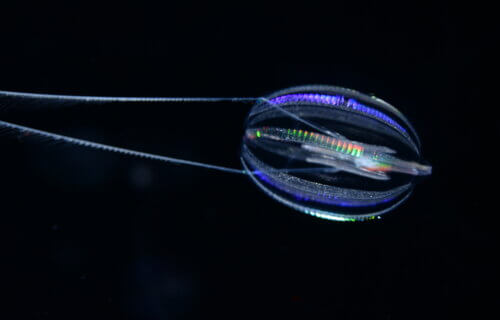BERKELEY, Calif. — Scientists believe they’ve identified the first animal to appear on Earth: a peculiar jellyfish-like creature. Researchers say all species evolved from a single common ancestor that lived as far back as 700 million years ago. These include creatures as diverse as sponges, insects, sharks, and humans.
“The most recent common ancestor of all animals probably lived 600 or 700 million years ago. It’s hard to know what they were like because they were soft-bodied animals and didn’t leave a direct fossil record,” says professor and study co-author Daniel Rokhsar from the University of California-Berkeley. “But we can use comparisons across living animals to learn about our common ancestors. It’s exciting — we’re looking back deep in time where we have no hope of getting fossils, but by comparing genomes, we’re learning things about these very early ancestors.”
For over a century, biologists have pondered what the earliest animals were like when they first emerged in the ancient oceans more than half a billion years ago. To uncover a definitive answer, an international team examined strands of DNA, known as chromosomes. They discovered that ctenophores were the first to branch off from the animal tree.
Ctenophores, or “comb jellies,” live all over the ocean today, from the poles to the equator and from the surface to the deep sea. Following the ctenophores, sponges emerged and then all other animals, including the lineage leading to humans. Simple single-celled life began approximately four billion years ago.
“We developed a new method to glimpse as deeply as possible into the origins of animal life. This discovery will lay the groundwork for scientists to begin developing a better understanding of how animals evolved,” says lead author Dr. Darrin Schultz from the University of Vienna, in a media release.

Most familiar animals, including humans, worms, flies, mollusks, sea stars, and other vertebrates, possess common features such as a head with a centralized brain, a gut that runs from a mouth to the anus, muscles, and more. These characteristics had already evolved by the time of the “Cambrian Explosion” around 500 million years ago, which marked a significant diversification of animals.
However, other genuine animals, such as jellyfish, sea anemones, sponges, and ctenophores, have simpler body plans. They may lack a defined brain, nervous system, or muscles but still share the hallmarks of animal life, such as the development of multicellular bodies from a fertilized egg.
“Traditionally, sponges have been widely considered to be the earliest surviving branch of the animal tree, because sponges don’t have a nervous system, they don’t have muscles, and they look a little bit like colonial versions of some unicellular protozoans,” explains Rokhsar. “In this scenario, the sponge lineage preserves many features of the animal ancestor on the branch leading to all other animals, including us. Specializations evolved that led to neurons, nerves and muscles and guts and all those things that we know and love as the defining features of the rest of animal life.”
The researchers sequenced the genomes of another comb jelly and sponge, as well as three single-celled organisms outside the animal lineage. Upon comparison, they found that ctenophores and non-animals shared specific gene-chromosome combinations, while sponges and other animals displayed distinctly different arrangements.
“That was the smoking gun. We found a handful of rearrangements shared by sponges and non-ctenophore animals. In contrast, ctenophores resembled the non-animals. The simplest explanation is that ctenophores branched off before these rearrangements occurred,” Rokhsar concludes.
The study is published in the journal Nature.
South West News Service writer Mark Waghorn contributed to this report.

